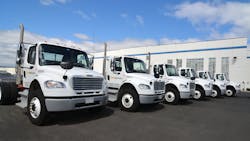It’s time to start thinking about asset purchasing plans for 2021. As a fleet manager, here are some questions to consider when creating a plan:
- How will the current economic environment change the outlook for 2021?
- How to contend with the increase or decrease in business volume over the next 12 to 24 months?
- How will operations change based on the new logistical requirements of the years to come?
While there is still much uncertainty about what the new year will bring, asset decisions cannot simply be deferred until there is a complete clear picture because by that point, it may be too late.
Any good budgeting process begins with a thorough analysis of the existing vehicles in a fleet. Looking at the utilization of each asset as well as what expenses will be incurred such as fuel, maintenance, repair, etc. in order to assess the TCO for each asset in the fleet. This will allow the ability to determine which specific assets are the first and last to be replaced. In essence, force ranking all assets from worst to first.
In light of the ongoing impact of COVID-19, fleet need to consider how to protect its drivers. Will fleets allow team drivers? What about slip seating? The decisions made in those areas will influence the number and kind of vehicles needed in a fleet.
Another factor to consider is the decreasing length of haul as we are seeing a move to more regional haul applications where drivers come home every night. A fleet's ability to get drivers home on a regular basis could be an advantage when it comes to hiring. For this reason, fleets may need to move from sleeper tractors to day cabs as drivers will be spending fewer nights on the road.
The dramatic growth of e-commerce has amped up the importance of the last mile in the supply chain. During the fleet analysis, evaluate whether this is an area to move into or if it is already part of the business model, reflecting how much growth is anticipated. E-commerce is here to stay so it's important to determine the right number and types of vehicles to participate in this growing and profitable segment of the market.
It is time to start planning for 2021. Good planning begins with an assessment of the condition of the assets on hand overlaid with insights into how operation will change in the coming year. From this fleets can determine which assets to keep, which assets to trade and what new assets are needed to acquire.
About the Author

Patrick Gaskins
Senior vice president, Fleet Solutions
Pat Gaskins is the senior vice president of Corcentric Fleet Solutions, where he leads both the sales and operations teams for the company’s fleet offerings. He has over 30 years of experience as a financial services professional in the transportation industry and manages partnerships with over 160 manufacturers, helping over 2,000 of the country’s largest fleets manage all aspects of their fleet operations and fleet-related spend.
